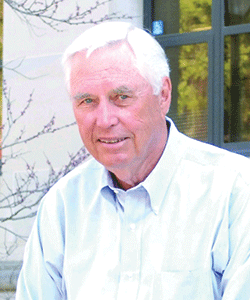John Swets
 BBN Technologies (retired)
BBN Technologies (retired)
William James Fellow Award
John Swets is the intellectual father of signal detection theory (SDT) — an idea he borrowed from World War II radar experts and adapted for the study of human decision making. He has played a key role in adapting SDT as a central tool in the study of perception, and ultimately in the field of medical diagnostics.
Both radar and the human mind have trouble detecting the few meaningful signals amid random noise. The tool that Swets and his colleagues developed — the so-called receiver operating characteristic (ROC) curve — points the way to the best decision threshold for each unique problem.
SDT assumes that the decision-maker is not a passive receiver of information, but an active decision-maker who makes difficult perceptual judgments under conditions of uncertainty. In foggy conditions, for example, we are forced to decide how far away from us an object is, based solely upon visual stimulus which is impaired by the fog. Since the brightness of the object, such as a traffic light, is used by the brain to discriminate the distance of an object, and the fog reduces the brightness of objects, we perceive the object to be much farther away than it actually is.
SDT now provides both the conceptual and the quantitative basis for formally making and evaluating most decisions that involve statistical uncertainty. Swets and his colleagues have developed computer programs to help doctors make decisions when looking at X-ray images. His work has had widespread implications not only for psychological science, but for the medical profession.





APS regularly opens certain online articles for discussion on our website. Effective February 2021, you must be a logged-in APS member to post comments. By posting a comment, you agree to our Community Guidelines and the display of your profile information, including your name and affiliation. Any opinions, findings, conclusions, or recommendations present in article comments are those of the writers and do not necessarily reflect the views of APS or the article’s author. For more information, please see our Community Guidelines.
Please login with your APS account to comment.